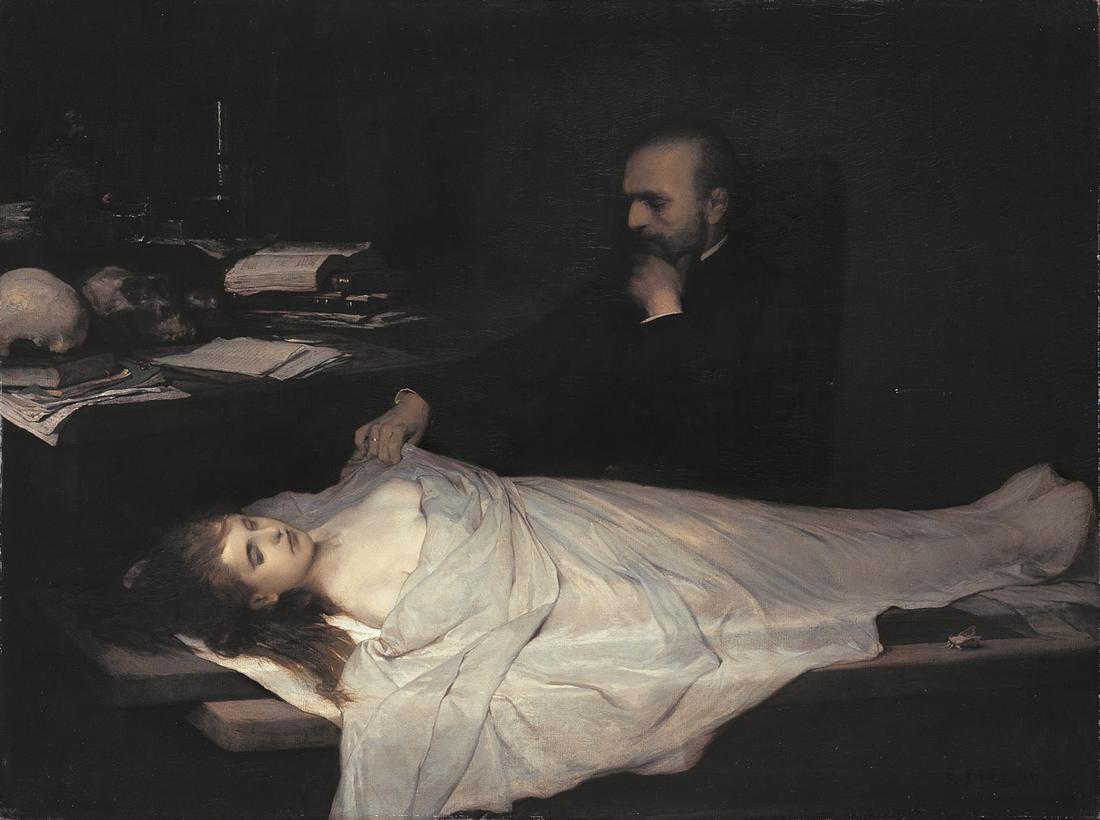.
Necrophilia is not a routine topic in art. Consequently, some years ago, I was shocked to discover Gabriel von Max’s canvas The Anatomist on prominent display at Munich’s Neue Pinakothek—no apology, no trigger warning. It was painted in 1869, six years after Manet’s Olympia—when Freud was still in short pants. The anatomist (or coroner) is a bearded middle-aged man, formally attired, respectable. He’s a creature of darkness, barely there. In the privacy of his rooms, he meditates on a dead girl, drawing back the sheet to perv on her breast. She’s incandescent, hauntingly beautiful, creamy pale (but with lips and eyelids turning blue). Gift-wrapped in a body-hugging sheet, as if in bed rather than on the slab, she has been described as ‘like a bride’. We’re prompted to imagine the tragic circumstances that brought her here, so young. Drowning, by the looks. But was it foul play, suicide, or accident? Her corpse may be fresh, but an attentive moth reminds us that she will soon be food for worms; but not before the anatomist has satisfied his curiosities. Conflating the male gaze and the medical one, Von Max’s painting implictes us in its prurience—that breast is being uncovered for our benefit too. His painting generates its creepy frisson from the contrast between its risqué, taboo subject and conservative, academic painting style—an effect greatly enhanced when we gaze on its depicted intimate-private space from the bustling-public one of a museum.
•
